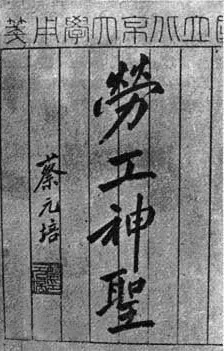Workers of the world, unite! May 1 in China is Labor Day, or International Worker’s Day. This holiday was officially established in China in 1949 to celebrate and honor the workers that made Chinese economy, industry, and society go around.
There are two main ways to say Labor Day in Chinese:
劳动节 Láodòng jié: Labor Day
五一(节)Wǔyī (jié): May Day (holiday)
May Day is on May 1, but this year Chinese workers get a longer holiday from Apr. 30 – May. 4. Over the holiday break, Chinese people celebrate Labor Day by traveling to scenic spots, visiting museum exhibits or performances, and enjoying the time off from work with family and friends.

Here are some sample sentences to practice May Day/Labor Day in Chinese:
预祝五一劳动节快乐!
- Yù zhù wǔyī láodòng jié kuàilè!
- Wishing you a happy Labor Day!
祝你劳动节快乐幸福。
- Zhù nǐ láodòng jié kuàilè xìngfú.
- Happy Labor Day to you.
五一节那天,广场上人头攒动。
- Wǔyī jié nèitiān, guǎngchǎng shàng réntóucuándòng.
- On May Day, the square was crowded with people.
The History of International Worker’s Day
Though many countries and movements honor workers around the world, the origin of the specific holiday on May 1 have their own story.
International Worker’s Day has its roots in worker protests in the United States. In 1866, the newly-formed National Labor Union boldly declared that their workers would no longer tolerate twelve, sixteen, or even eighteen-hour workdays:
“The first and great necessity of the present, to free labor of this country from capitalist slavery, is the passing of a law by which 8 hours shall be the normal working day in all states in the American union. We are resolved to put forth all our strength until this glorious result is attained.”
Protests and workers’ movements for the 8-hour-workday and better rights spread throughout the US working class in the late 1800s. The most famous strike was held in Chicago on May 1, 1886. After a large parade, the event spiraled into violence. During what is known as the Haymarket Riot on May 4, 1886, a public meeting of workers, radicals, and anarchists was disrupted by the police and morphed into a full-blown riot that captivated observers and led to several deaths. The supposed organizers of the event were arrested and seven were sentenced to death.
In Brussels in 1891, European workers and supported and memorialized May 1, vowing to keep the memory of the May Day strikes in Chicago and the rights of workers around the world alive.

By 1900, May Day was spreading rapidly. In Russia, Lenin wrote about his grand plans for Russia’s May Day celebrations: “In another six months, the Russian workers will celebrate the first of May of the first year of the new century, and it is time we set to work to make the arrangements for organizing the celebrations in as large a number of centers as possible.”
By 1918, May Day had spread to China through the organizations of underground Communist organizations. Communists in Shanghai, Suzhou, and Hangzhou distributed pamphlets with the slogan “Labor is Sacred” (劳工神圣).
After 1949, the PRC established May 1 as a national holiday. Today it is known by multiple names: May Day, International Workers Day, or Labor Day. It quickly became one of the most popular Chinese holidays, especially during the Cultural Revolution. Traditional holidays such as Dragon Boat Festival and Mid-Autumn Festival declined in importance during this time period.
However, in 2007, May Day was shortened to a three-day weekend, allowing more time in the calendar for these traditional Chinese festivities.

- SUMC Deadline Extended: June 15, 2025 - April 26, 2025
- 5 Chinese Universities Without Application Fee - April 19, 2025
- 9 Best Schools to Study Chinese in Beijing in 2025! - April 6, 2025
